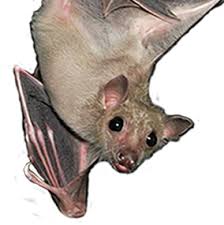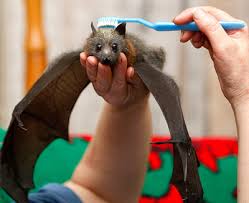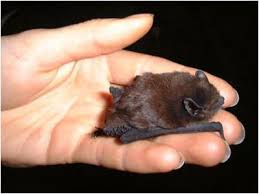Before we look at “Winged Wednesday”:
Please Help Animals In the Fire Zones.
“Igniting with the slightest spark, scalding wildfires are racing across half the country.”Disaster Update: Danger Zone, July 9, 2012
Dear Friend,
 “The news isn't new anymore, but it continues to be just as terrifying: Fires are chewing through houses, apartments, and farmland in Wyoming, Utah, Montana, New Mexico, and Colorado, leaving only withered remnants of life and structures in their wake.
“The news isn't new anymore, but it continues to be just as terrifying: Fires are chewing through houses, apartments, and farmland in Wyoming, Utah, Montana, New Mexico, and Colorado, leaving only withered remnants of life and structures in their wake.
At the Northern Cheyenne Indian Reservation in the hard-hit area of southeast Montana, the fires consumed almost 200,000 acres, driving residents to vacate the land and leaving 200 horses without access to food or water. In response, The Humane Society of the United States' Animal Rescue Team has provided food and water for the companion animals left behind, and we've also arranged for the delivery of more than 30,000 pounds of hay to feed these starving horses.
We're only able to provide relief for these animals because of generous supporters like you. Will you help us continue to answer the call during this and other times of disaster by making a donation to our Disaster Relief Fund today?
 Our relief efforts have also taken us to Fairview, Utah, where we’re providing hay to a horse owner who has already lost 11 of his 120 horses as a result of the fires. As he told us, "I have never seen anything like this in all the years I have been farming, [and] I am at a loss as to what these fires mean for the future of my community. I'm grateful to The HSUS for providing an emergency supply of hay for my horses."
Our relief efforts have also taken us to Fairview, Utah, where we’re providing hay to a horse owner who has already lost 11 of his 120 horses as a result of the fires. As he told us, "I have never seen anything like this in all the years I have been farming, [and] I am at a loss as to what these fires mean for the future of my community. I'm grateful to The HSUS for providing an emergency supply of hay for my horses."
We're truly privileged to be able to give back, in a time where so many people are losing everything they've ever had and known -- and our efforts simply would not be possible without your kindness. Please, donate today to our Disaster Relief Fund and keep us on the ground and at the ready for animals and their owners who need our help.
With sincere gratitude, and my wishes of well-being to you and your animals, thank you.” ![]() Wayne Pacelle, President & CEO
Wayne Pacelle, President & CEO
The Humane Society of the United States
Please donate today to help us provide care for animals in crisis whenever, and wherever, they need.
Trouble with links or images? View this message online.
_____________
Black Turnstone


“The Black Turnstone is a stocky, short-legged shorebird with a striking black-and-white pattern most visible in flight. This species usually breeds within a mile or two of the Pacific Coast, lining a shallow depression with grass on the ground, usually near water. Individuals often show strong site and mate fidelity when breeding. Courting males perform a display where they fly high and dive abruptly, causing their vibrating feathers to produce an audible sound.
This bird feeds mainly on invertebrates in the rocky intertidal zone, finding food by turning over stones and other objects. In summer, on their breeding grounds, they also feed on seeds and berries.
The Black Turnstone is a species of conservation concern due to its very small breeding distribution, which means it could be seriously affected by any single major catastrophe. In addition, much of its wintering range is near major oil production and shipping locations, where a spill could affect a large proportion of the population.” Help ABC conserve this and other birds and their habitats!
__________
Bird sings by playing its wings like a violin
“Could this be nature's greatest fiddler? Scientists have finally discovered how the club-winged manakin 'plays' its heavy wings as a mating call.”
 Photo: Wiki Commons
Photo: Wiki Commons
“The jungle is full of songbirds, but none quite like the club-winged manakin, a small passerine bird found in the cloud forests of Colombia and Ecuador. While most birds are vocalists, the club-winged manakin prefers to play lead fiddle ... with its wings.
Listening to the club-winged manakin play a tune is one of nature's unique spectacles. It's the only known bird species to play music by rubbing its wings together. Until now, though, scientists knew little about how the birds' instruments worked, according to BBC Nature.” More at: http://www.mnn.com/earth-matters/animals/stories/bird-sings-by-playing-its-wings-like-a-violin#
A male displaying in a lek:
More info: http://ibc.lynxeds.com/species/club-winged-manakin-machaeropterus-deliciosus
__________
Texas City Prairie Preserve
A lack of suitable habitat is the biggest threat to the recovery of the Attwater’s prairie chickens.




 “The 2,303-acre Texas City Prairie Preserve is situated on Galveston Bay in Texas City, approximately 40 miles south of Houston. The preserve features rare coastal prairie habitat and is one of the last remaining sites that supports Attwater's prairie chickens. At the turn of the century, there were approximately one million Attwater's prairie chickens along the Texas coast. However, loss of coastal prairie habitat over the years to development, woody plant encroachment, and invasion from exotic plants and insects has devastated the population, making the bird one of the most endangered in North America.
“The 2,303-acre Texas City Prairie Preserve is situated on Galveston Bay in Texas City, approximately 40 miles south of Houston. The preserve features rare coastal prairie habitat and is one of the last remaining sites that supports Attwater's prairie chickens. At the turn of the century, there were approximately one million Attwater's prairie chickens along the Texas coast. However, loss of coastal prairie habitat over the years to development, woody plant encroachment, and invasion from exotic plants and insects has devastated the population, making the bird one of the most endangered in North America.
The recovery program for the Attwater's prairie chicken has included the introduction of captive-bred juvenile birds into the wild at the preserve. The birds are monitored and a survey of their numbers is taken every spring.
Restoration of the coastal prairie is a primary stewardship activity on the preserve. Cattle grazing, which has occurred on the coastal prairie since the late 1800s, continues to be used as a management tool today. And through the use of prescribed burning, the Conservancy staff is returning natural fire to the preserve; woody plants invading the prairie and non-native species such as Chinese tallow trees and deep-rooted sedge pose a serious threat to coastal prairies, and are being eliminated. Volunteers are interested individuals are encouraged to contact the preserve.
In addition to habitat for the prairie chicken, the property provides a home for wintering and migrating grassland songbirds. The preserve also contains excellent wetlands that support migratory and year-round populations of waterfowl, shorebirds and wading birds, including nesting colonies of least terns and black skimmers. Other birds sighted here include brown pelican, white-faced ibis, black rail, American peregrine falcon, white-tailed hawk, reddish egrets, Forster's terns and American oystercatchers. Plants found on the preserve include big and little bluestem, indiangrass, switchgrass, eastern gammagrass, cordgrass and the rare coastal gayfeather.” More at: http://www.nature.org/ourinitiatives/regions/northamerica/unitedstates/texas/placesweprotect/texas-city-prairie-preserve.xml
“Today less than 150 Attwater's prairie chickens survive in the wild, and the species has been federally listed as endangered since 1967. As part of ongoing species recover efforts, the Conservancy, the U.S. Fish and Wildlife Service and other partners in the Attwater's Prairie Chicken Recovery Team are working with landowners in the Refugio-Goliad Prairie region to reintroduce wild populations amid the high paspalum and native bluestem of Texas' coastal prairie—the species' historic habitat. Video courtesy TPWD.”
___________
Crucial Bird Conservation Programs Cut by 50 Percent by House Subcommittee

Long-billed Curlew by Bill Hubick
(Washington, D.C., June 22, 2012) “In a move attacked by bird conservation groups as “one of the most regressive wildlife appropriations” ever, crucial conservation programs were slashed by 50% of FY 2012 funding levels in a funding bill approved by the House Interior, Environment, and Related Agencies Appropriations Subcommittee for Fiscal Year 2013. The Neotropical Migratory Bird Conservation Act (NMBCA) - a major source of funding for conservation programs that benefit migratory birds –was also cut in half.
Also sliced in half were funding for State Wildlife Grants, the nation’s core program for preventing birds and wildlife from becoming endangered in addition to supporting strategic conservation investments in every state and territory, and the North American Wetlands Conservation Act, which provides funding for conservation projects that benefit wetland birds.
“I think this is a serious setback on the threat-to-wildlife scale,” said Darin Schroeder, Vice President for Conservation Advocacy for American Bird Conservancy. “Of course we are in tough economic times, but the answer certainly isn’t to slash and burn conservation programs!
Wildlife related activities such as birdwatching pump billions of dollars into the economy every year. If wildlife conservation programs are gutted and wildlife populations shrink, local economies will suffer. There’s no doubt that funding for these wildlife bills are both effective and essential.” More at: http://www.abcbirds.org/newsandreports/releases/120622.html
___________
Tell your Elected Officials Not to Slash Funding for Bird Conservation!

Painted Bunting by Greg Lavaty, texastargetbirds.org
“The House of Representatives is planning to cut over $50 million in funding for key bird conservation programs in its budget. If passed by the full House and Senate, these destructive cuts will harm birds and other wildlife, and undo decades of successful conservation efforts. Programs targeted:
• The Neotropical Migratory Bird Conservation Act, the only federal U.S. grants program specifically dedicated to the conservation of our migrant birds throughout the Americas
• State Wildlife Grants, the nation’s core program for preventing birds and wildlife from becoming endangered in addition to supporting strategic conservation investments in every state and territory
• The North American Wetlands Conservation Act, which provides funding for conservation projects that benefit wetland birds
Click here to see a chart showing the extent of the cuts proposed.
Representatives and Senators need to hear from bird advocates like you today to ensure that these critical bird conservation programs continue to be funded.
We have made it easy for you to take action now - simply click on the link below, enter your zip code, and then send the automatically generated email to your elected representative asking them to express their support for these programs. Feel free to take a little extra time to add some thoughts of your own to the text we have provided.
In order to address your message to the appropriate recipient, we need to identify where you are, Please enter your zip/postal code at: http://org2.democracyinaction.org/o/5400/p/dia/action/public/?action_KEY=11085
Thank you for your help in ensuring the next generation of Americans will have a chance to appreciate the native birds we enjoy today.”
___________
Bravo, Bats!
 Bats are included in “Winged Wednesday”, as they have wings, too.
Bats are included in “Winged Wednesday”, as they have wings, too.
“Beneficial Bat Fact Sheets : Common food items/spices that are dependent on bats such as chocolate, orange juice, ketchup, French fries, peanut butter, apple, banana, black pepper, coffee beans, jelly/jam, corn, oatmeal, hamburger buns with sesame seeds, allspice, basil, cloves, ginger, whole coconut, bananas, strawberries, and dipping chocolate and/or assorted fruit, flaked coconut, and pecans for fruit salad.
 We usually think of bees and butterflies as pollinators of flowers, but bats are major pollinators as well. The following items depend on bats for pollination.
We usually think of bees and butterflies as pollinators of flowers, but bats are major pollinators as well. The following items depend on bats for pollination.
· Bananas
· Dates (Date palm trees are also tapped for the sweet sap, which is turned into sugar and molasses.)
· Coconut (The coconut palm tree also give us coconut palm oil, which is used to make many products such as candy bars, soup, sugar, soap, ink, margarine and cosmetics.)
· Cloves (In addition to being used as a spice, cloves are used in perfumes and medicines.)
· Vanilla
· Brazil nuts
· Avocadoes
Bats help spread seeds of many plants over a wide area, making sure that more plants grow and produce food. Bats may carry off a piece of fruit, eat the fruit and drop the seeds some distance from the original plant, or they might eat the seeds, which then pass through their bodies and are discarded in their feces. Without bats to spread seeds, we might not have these tasty treats.  · Almonds and cashews
· Almonds and cashews
· Figs
· Allspice
· Chocolate (Chocolate is made from the cacao tree. Fruit bats eat the cacao fruit pulp and discard the cocoa bean, which will grow into a new tree. This is especially important because cacao fruit won’t fall from the tree by itself, so we depend on bats to provide us with more cacao trees.).” More at: http://www.fws.gov/midwest/Endangered/mammals/inba/curriculum/Chapter9.pdf
____________
Plants for Pollinators: A Collection of Favorites
Wildlife gardeners across the country share photos and descriptions of prized native plants that attract pollinators to their yards
National Pollinator Week took place June 18 to 24, 2012. To celebrate, we asked gardeners across the country who’ve created wildlife-friendly habitats to talk about some of their favorite native plants for attracting bees, butterflies, birds and other pollinating species. Following are the descriptions and images they shared.
Blue Mistflower Conoclinium coelestinum
"Blue mistflower is a favorite of butterflies (white peacock, above). Though it is said to appreciate rich, well-drained soil in full sun, it thrives in our home garden’s extremely alkaline fill. Underneath the fiddlewood tree in the landscape at our place of business, the plant tolerates a good bit of shade."
"In our area, mistflower blooms year-round, with an extra burst in the fall—just in time to drive Florida’s milkweed butterflies [species that lay eggs on milkweed plants, such as monarchs, queens and soldiers] crazy! I can’t help but notice that the mistflower seems especially attractive to the male butterflies. I wonder if its blossoms contain more of the chemical alkaloids the males require to produce pheromones to attract females." —Carol McDonald of Charlotte County, Florida. More at: http://www.nwf.org/News-and-Magazines/National-Wildlife/Gardening/Archives/2010/Native-Plants-for-Pollinators.aspx
___________
On This Day:
Skylab crashes to EarthJul 11, 1979:,
“Parts of Skylab, America's first space station, come crashing down on Australia and into the Indian Ocean five years after the last manned Skylab mission ended. No one was injured.
Launched in 1973, Skylab was the world's first successful space station. The first manned Skylab mission came two years after the Soviet Union launched Salynut 1, the world's first space station, into orbit around the earth. However, unlike the ill-fated Salynut, which was plagued with problems, the American space station was a great success, safely housing three separate three-man crews for extended periods of time.
Originally the spent third stage of a Saturn 5 moon rocket, the cylindrical space station was 118 feet tall, weighed 77 tons, and carried the most varied assortment of experimental equipment ever assembled in a single spacecraft to that date. The crews of Skylab spent more than 700 hours observing the sun and brought home more than 175,000 solar pictures. They also provided important information about the biological effects of living in space for prolonged periods of time.
Five years after the last Skylab mission, the space station's orbit began to deteriorate--earlier than was anticipated--because of unexpectedly high sunspot activity. On July 11, 1979, Skylab made a spectacular return to earth, breaking up in the atmosphere and showering burning debris over the Indian Ocean and Australia.”
___________
Yesterday:
Misty and I went to get Jay as he hadn’t paid his water bill by the 10th, and the late charges are horrible, so we made it our shopping day, instead of today. We had to stop at the bank in the local Krogers for him to get a money order for the water bill, they don’t take cash or cards, and I found a few bargains there.
After the bill was paid at the water office, we went to Hancocks in Conroe, (I have a gift certificate) to find some curtain rings to sew on the cargo trailer drapes. We found them, but they were white plastic. As I was checking out they had a clearance basket with brass ones a lot cheaper, so Jay put the plastic ones back while I checked out.
As we were so close, we looked in the Clearance Dept. at Petco, and I bought several 2½ lb bags of Wellness cat food for $3 each. Wellness is just about the best there is, and most expensive. It wasn’t outdated or anything wrong with it, just they were changing the packaging. Prime doesn’t eat that much dry food, but I’ll mix it with her Taste of The Wild, and give some to Ray for his 3 cats.
By now, Jay was getting tired, so no thrift shops, but we stopped at my favorite Kroger’s in Conroe for the rest of the shopping, all $28 worth! He couldn’t keep up with me running up and down the store. What is he going to be like when he gets to my age, if he does!
It rained a bit yesterday, and it is pouring again right now and looks like it has set in for the rest of the day.



















1 comment:
You sure are a good shopper and also lucky enough to find things you want that are on sale.
Post a Comment